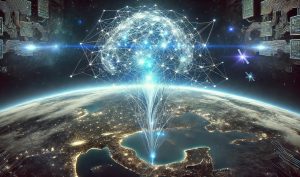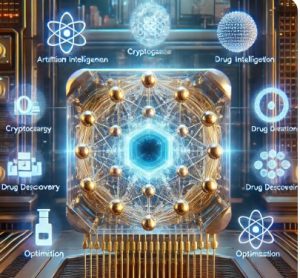 The rise of open-source AI frameworks, exemplified by platforms like DeepSeek, is democratizing access to advanced machine learning tools and accelerating innovation at an unprecedented pace. Unlike proprietary systems that once dominated the field, open-source models are breaking down barriers for startups, researchers, and enterprises, enabling collaborative development and rapid iteration. Over the next two years, this shift will redefine how industries build, deploy, and scale AI solutions.
The rise of open-source AI frameworks, exemplified by platforms like DeepSeek, is democratizing access to advanced machine learning tools and accelerating innovation at an unprecedented pace. Unlike proprietary systems that once dominated the field, open-source models are breaking down barriers for startups, researchers, and enterprises, enabling collaborative development and rapid iteration. Over the next two years, this shift will redefine how industries build, deploy, and scale AI solutions.
DeepSeek and similar platforms (e.g., Hugging Face, Meta’s Llama, and Mistral) provide free, customizable models that organizations can adapt to niche use cases—from healthcare diagnostics to supply chain optimization. For instance, startups now leverage pre-trained language models to build customer service bots in days, not months, while researchers fine-tune open-source code for climate modeling or drug discovery. This accessibility slashes costs and fosters cross-industry collaboration, with developers globally contributing to model improvements.
The impact is twofold:
- Disruption of Proprietary Giants: Companies reliant on closed AI ecosystems (e.g., legacy enterprise software) are pressured to adopt hybrid models, integrating open-source tools to stay competitive.
- Specialized AI Proliferation: Industries like agriculture, education, and logistics are creating bespoke AI solutions by retraining open-source models on proprietary data, bypassing one-size-fits-all platforms.
In the next two years, expect smaller, more efficient models tailored for edge devices (e.g., IoT sensors, smartphones) to dominate, driven by open-source innovation. Meanwhile, ethical debates around transparency and governance will intensify as these models permeate critical systems. Open-source AI will also push “AI-as-a-Service” providers to prioritize interoperability, letting users plug-and-play models across ecosystems.
Challenges Ahead:
- Ensuring security in decentralized development.
- Balancing innovation with ethical guardrails.
- Sustaining funding for open-source projects.
Image Overview: A global network of developers collaborating on an open-source AI model (visualized as a glowing neural network), with code snippets and industry-specific applications (healthcare bots, smart farming drones) branching out.
By 2025, open-source frameworks like DeepSeek will not only level the playing field but also spark a renaissance in AI creativity, where agility and collaboration outpace monolithic systems. The future belongs to those who can harness collective intelligence—while navigating the risks of an open ecosystem.
 Quantum computing, which leverages quantum mechanics principles like superposition and entanglement, promises to solve problems intractable for classical computers. However, its practical adoption faces significant hurdles. Here’s an analysis of its near-term potential, key players, technologies, and challenges.
Quantum computing, which leverages quantum mechanics principles like superposition and entanglement, promises to solve problems intractable for classical computers. However, its practical adoption faces significant hurdles. Here’s an analysis of its near-term potential, key players, technologies, and challenges.